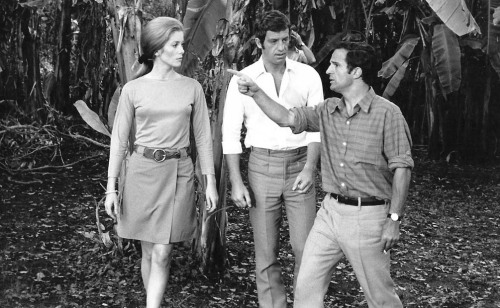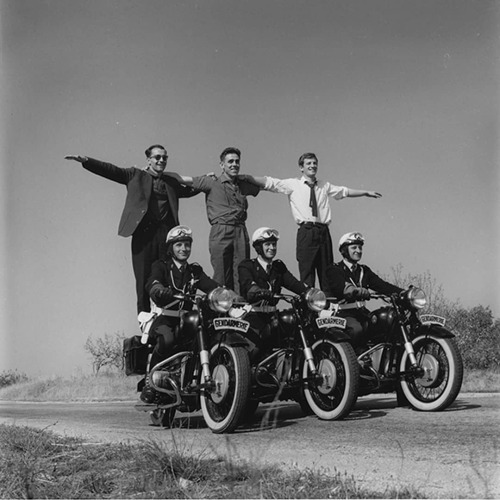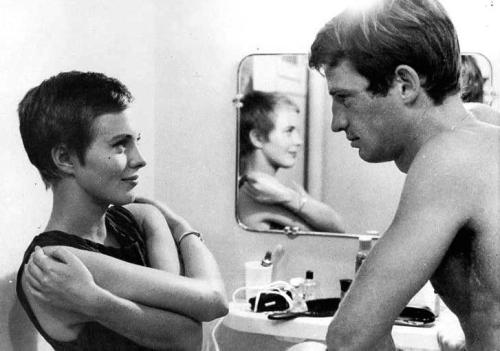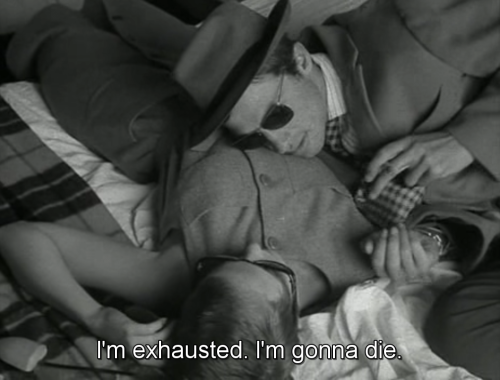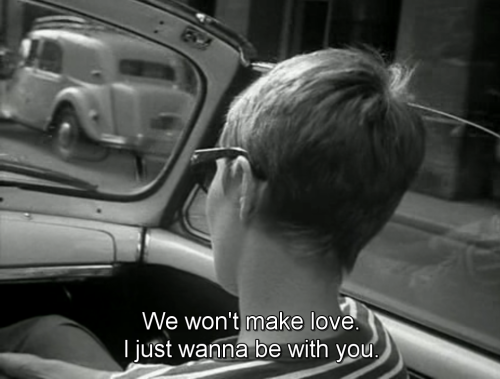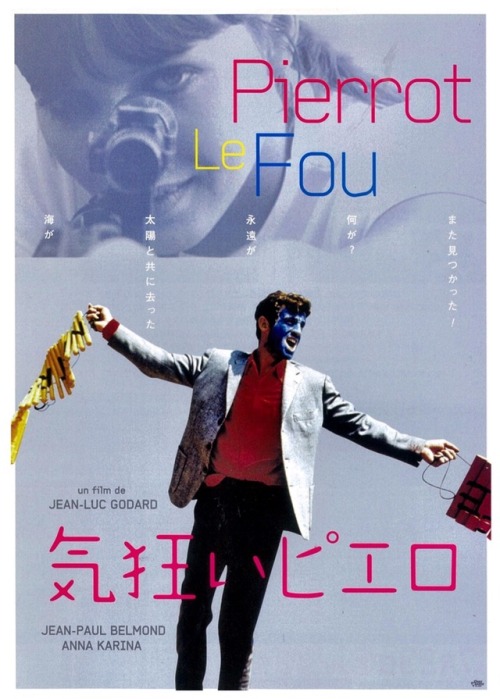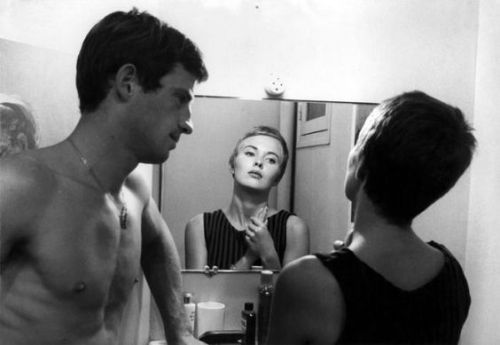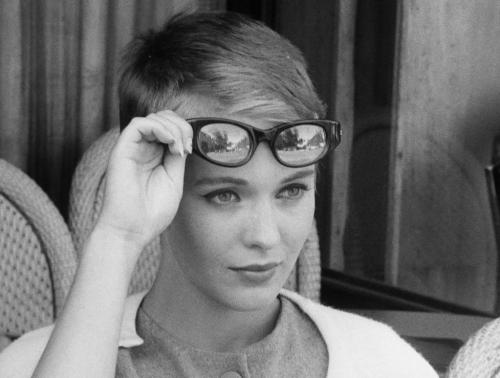#jean-paul belmondo
Pierrot le fou (1965) by Jean-Luc Godard
Book title:La bande des Pieds Nickelès (1965) by Louis Forton
Post link





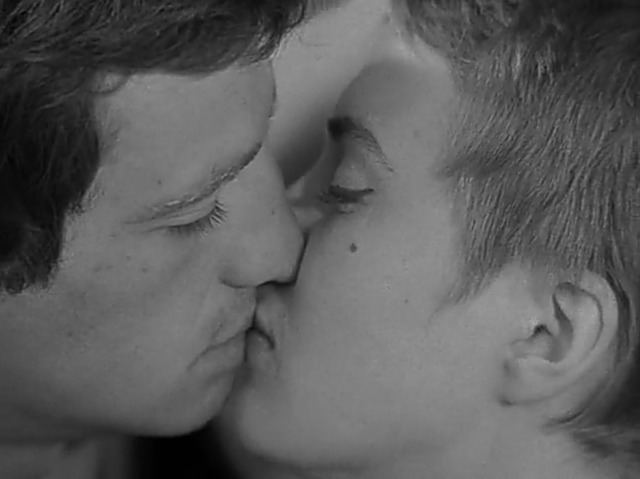


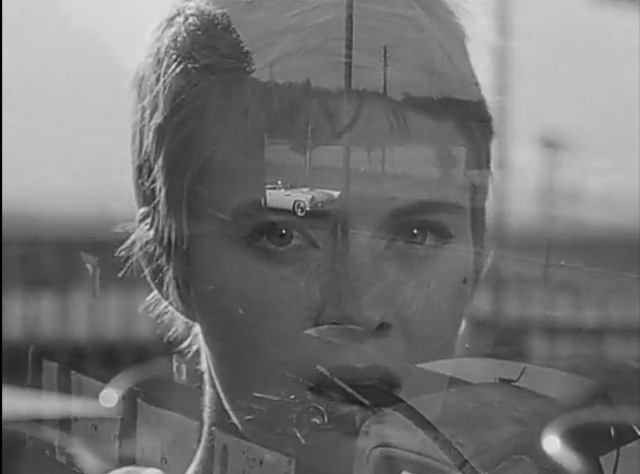

Between grief and nothing, I’ll take grief.
Ā bout de souffle (Breathless) dir. Jean-Luc Godard (1960)
Revolutionary Cinema
Jean-Luc Godard, Raoul Coutard, and Jean-Paul Belmondo take a ride with the Gendarmerie nationale during the making of BREATHLESS (1960).
Photo by Raymond Cauchetier
Post link



French film legend
Jean Paul Belmondo 1933-2021


@tcmparty live tweet schedule for the week beginning Monday, December 27, 2021. Look for us on Twitter…watch and tweet along…remember to add #TCMParty to your tweets so everyone can find them :) All times are Eastern.
Monday, December 27 at 8:00 p.m.
BREATHLESS / À bout de souffle (1960)
A small-time hood hides out from the cops with his American girlfriend.
Friday, December 31 at 8:00 p.m.
THE THIN MAN (1934)
A husband-and-wife detective team takes on the search for a missing inventor and almost gets killed for their efforts.

“You speak to me in words and I look at you with feelings”
There was a period in the mid-1960’s in which some of the biggest names in European cinema began to experiment with colour in their films – Antonioni, Fellini, and Demy all produced some of the finest work of their careers in this time. But none of these arthouse icons used colour as flamboyantly as Jean-Luc Godard did in his 1965 film, Pierrot le Fou.
The film follows Ferdinand, a recently unemployed man bored with his bourgeois lifestyle. A few years after meeting Marianne, a babysitter, he runs away with her to lead a nomadic life of crime and free living.
Pierrot le Fou is essentially a cinematic work of pop-art: bold, garish colours, free-form storytelling, absurd subject matter, and a complete disregard for convention and cliche. Of course, this kind of cinematic anarchy has always been Godard’s prerogative, but never has it been delivered so boldly and abrasively as in Pierrot le Fou.
The colour is, predictably, the most obvious point of entry to the anarchy of Godard’s film. It’s not his first colour film (A Woman is a Woman was his first, four years earlier) but it’s certainly the film in which the colour is used so blatantly. He shoots Pierrot le Fou in cartoonish shades of red and blue, symbolic of the farcical Bonnie and Clyde style storyline underneath it all, lending it a wildly absurd tone. Godard gives the impression that this is a film not to be taken too seriously, when, in reality, we should be doing the exact opposite.
The comical tone and primary colours are masking what is a rather violent criminal story. Marianne and Ferdinand are on the run after committing a string of murders and robberies, and they live an exciting, dangerous life. But the vibrant colours and many of their crazy actions (Marianne punches a man in the same way as she saw in Laurel and Hardy, for example) go a long way to contradict the violence.
IsPierrot le Fou Godard’s comment on desensitisation? Is it a parody of commercialism and pop culture? It could easily be a number of things, or, just as easily, none of them. The only thing that’s definite here is that this is a completely ridiculous and utterly wonderful film, and one that is more than deserving of your attention.
- What is your greatest ambition in life?
- To become immortal… and then die.
À bout de souffle [Breathless] (1960, Jean-Luc Godard)
Post link
When we talked, I talked about me, you talked about you, when we should have talked about each other.
Post link
Marcel Carné, Peccatori in blu-jeans(1958)
«Che ci farei io lì in mezzo a voi? Ormai mi sento vecchio e poi mi fa così male vedere persone che si amano, persone felici. Felici come avrei potuto essere io…»
Post link
À bout de souffle (Breathless) - Jean-Luc Godard (1960)
I just started posting reviews and I noticed that if someone based my website on the first two films I reviewed they’d think I was super super lame, so I thought I’d pull up one of my favourite films of all time, Jean-Luc Godard’s classic.
Breathless is one of the greatest films ever made in my opinion.
The character development is so different than other films. Godard doesn’t use dialogue and character history to make us feel something for the character, he just let’s us watch them; let’s us observe them when they’re alone.
Belmondo’s character even breaks the fourth wall and speaks to the audience, and it actually works really well. He’s a bit of a douchebag but I didn’t even mind, I still like him.
Godard breaks all of the conventions set for him by filmmakers at the time, and questions ’whyis the camera always supposed to be fixed on their face when they speak?’ and films however he feels will best suit his film. It’s like James Joyce’s use of punctuation and grammar towards the end of Ulysses. Godard was such a genius that he couldn’t even be subordinated by film conventions.
The scenes filmed in the public really were filmed in the public. As in, the supposed extras who are in the background are all looking directly into the camera, some stopping, pointing and looking at Belmondo and Seberg act. But it just adds a new, amazing dimension. Belmondo himself thought this film was so terrible, but it’s the fact that it’s different that makes it so fresh and calming.
I can’t even put into words how perfect this film is. Godard does not need a good plot line, he does not need film sets and perfect lighting and he does not need to follow the ‘rules’ of film. All he needs is a camera and to question why film had such conventions anyway.
There are some serious literary and artistic allusions, that were fun to pick up on too. Godard knows that the film has so many things that would be considered wrong and bad at the time, but he sees film outsider the boundaries of just being the same story with better and better sets. He is truly innovative. He focuses on so much over the plot that the film has such a unique dimension.
Entertaining,different (which I can never stress enough as being the key to a good film) and refreshing. Also you feel pretty damn cool watching it.
Five stars/Five
Post link



